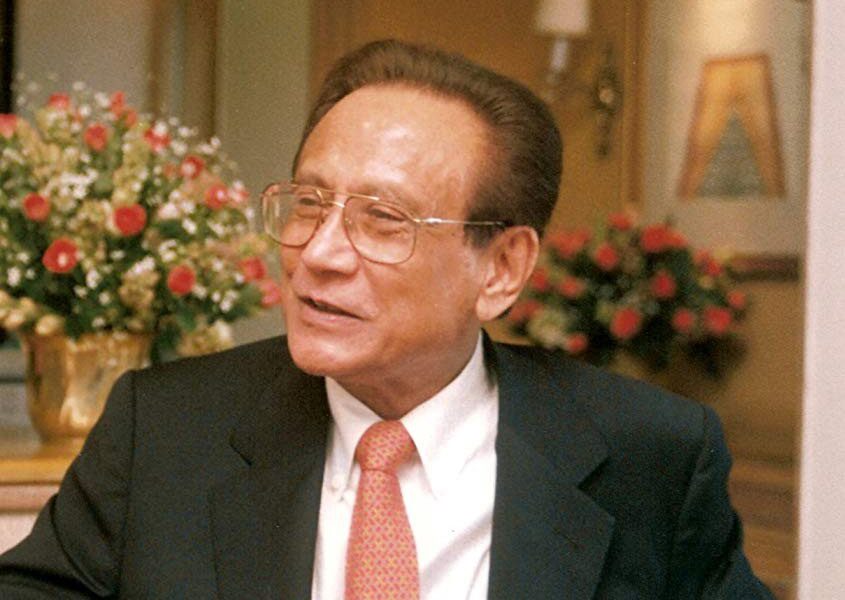In the story of Mani L. Bhaumik, we find one of the most awe-inspiring journeys of human resilience, brilliance, and compassion. Rising from the depths of poverty in a remote village in West Bengal, India, Dr. Bhaumik would go on to help shape modern laser technology and leave an indelible mark on both science and society.
Today, millions benefit from his work without even knowing his name—his pioneering role in the development of excimer lasers led directly to LASIK eye surgery, transforming the lives of people with vision problems across the globe.
Born into a family of modest means, Mani L. Bhaumik’s early life was anything but easy. He spent his childhood in a thatched-roof mud hut, often going to bed hungry and sleeping on rags. His family, comprising his parents and six siblings, struggled daily for survival.
“My family didn’t always know where our next meal would come from,” he recalled. “I didn’t own a pair of shoes until I was 16 and walked four miles to school and back in my bare feet.”
To make matters harder, the political upheaval surrounding India’s independence deeply affected his upbringing. His father, a dedicated freedom fighter, spent long periods in jail. Despite the instability and deprivation, young Mani clung to his dreams.
From an early age, Bhaumik displayed an insatiable curiosity about the universe. His interest in science was not born in well-funded laboratories but in candle-lit moments of wonder, pondering the mysteries of nature.
He eventually enrolled at the University of Calcutta, where he studied under the legendary Satyendra Nath Bose—yes, that Bose, of Bose-Einstein fame. With guidance from such intellectual giants, Bhaumik earned his master’s degree in physics.
But he wasn’t done.
In 1958, he became the first student to earn a PhD in physics from the Indian Institute of Technology (IIT) Kharagpur—a major milestone not only for him but for the institute and Indian science itself.
Armed with brilliance and a fellowship from the Sloan Foundation, Bhaumik arrived at UCLA in 1959 with just $3 in his pocket. His village pooled funds to buy him an airline ticket—a gesture that would one day reap global rewards.
“I thought I’d died and gone to heaven,” he said of arriving in America. “Everyone was treated equally, not like back at home where the poor were treated like dirt.”
At UCLA, he found the freedom and infrastructure he needed to explore his full potential.
In 1961, Bhaumik began his professional career at Xerox Electro-Optical Systems as a laser scientist. He later joined Northrop Corporation, where he led the Laser Technology Laboratory. It was here that he would make history.
In 1973, Bhaumik and his team achieved the first successful demonstration of the excimer laser—a technology that would revolutionise precision surgery and manufacturing.
This development became the foundation for LASIK eye surgery, allowing millions to discard glasses and contact lenses. It also set new standards in biological tissue cutting and high-precision engineering.
Dr. Bhaumik’s scientific prowess didn’t go unnoticed. He was elected a Fellow of the American Physical Society and the Institute of Electrical and Electronics Engineers (IEEE)—two of the most prestigious scientific bodies in the world.
In 2011, the Government of India awarded him the Padma Shri, one of the country’s highest civilian honours, for his distinguished contribution to science and engineering.
But he didn’t stop at accolades.
Concerned by dwindling public funding for science, particularly in theoretical physics, Dr. Bhaumik became a passionate advocate for research. He joined the UCLA Physical Sciences Board of Visitors, and through his donations, established the Mani L. Bhaumik Presidential Chair in Theoretical Physics.
He also helped fund the research team led by Professor Zvi Bern, one of the world’s leading physicists in quantum field theory.
“Physics holds the answers to the most fundamental questions of our very existence,” he noted. “Imagine what could be solved right here at UCLA.”
What sets Dr. Bhaumik apart is not just his scientific genius, but his ability to connect complex ideas to the general public. He authored two bestselling books—“Code Name God” and “The Cosmic Detective”—both exploring spirituality and science in a highly accessible way.
He even ventured into children’s education through entertainment, creating the Emmy-winning animated TV show “Cosmic Quantum Ray,” which introduces young minds to physics in a fun, digestible format.
Also Read: How a Filipino Student Turned Food Waste into a Solar Innovation That Works Without Sunlight
In India, his rags-to-riches story has become a symbol of hope and ambition. He established the Mani Bhaumik Educational Foundation to support bright, underprivileged students and donated land to build the Bhaumik International Centre for Advanced Research at IIT Kharagpur—his alma mater.
His message is simple yet powerful: poverty need not be a life sentence. With knowledge, grit, and the right opportunities, one can reach for the stars—literally.
The journey of Dr. Mani L. Bhaumik is a tale of triumph—of how a barefoot boy from a tiny village in West Bengal became a global leader in laser science, a best-selling author, a philanthropist, and a cultural icon.
His life reminds us that education is the strongest weapon we can wield—not just for personal upliftment, but for transforming entire communities. And in a world clouded by conflict and division, Bhaumik’s life also teaches us that science and compassion are not mutually exclusive—they’re deeply intertwined.

1 COMMENTS